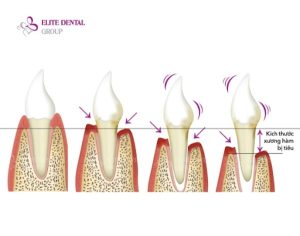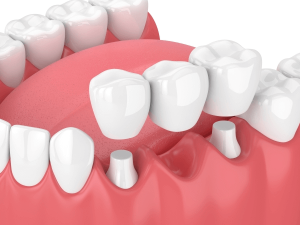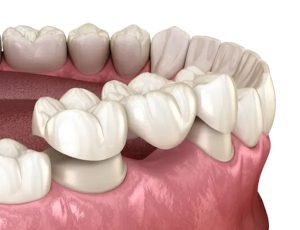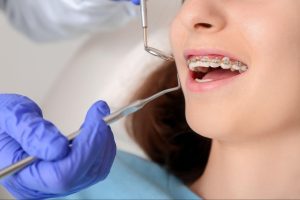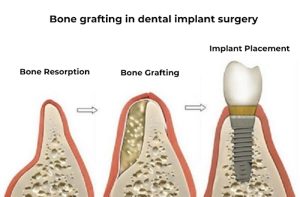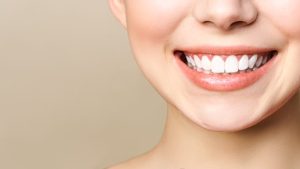Table of content
Jawbone resorption is a serious complication that often occurs after prolonged tooth loss or due to periodontal disease. Resorption of the tooth socket significantly impacts the jawbone structure and the overall aesthetics of the face. Therefore, it is crucial not to be complacent and to actively seek timely remedies. Let’s delve deeper into the phenomenon of jawbone resorption and the optimal treatment methods in the following article with Elite Dental!
1. What is jawbone resorption?
Jawbone resorption is the condition where the bone in the tooth socket and the root of the tooth decreases in density, quantity, height, and volume. This phenomenon can occur in both the upper and lower jawbones due to their relatively soft nature, which makes them prone to resorption if there are gaps in the dental arch or bacterial invasion. Moreover, tooth resorption can initially start at one location in the dental arch but tends to spread to adjacent areas over time, significantly affecting oral health.
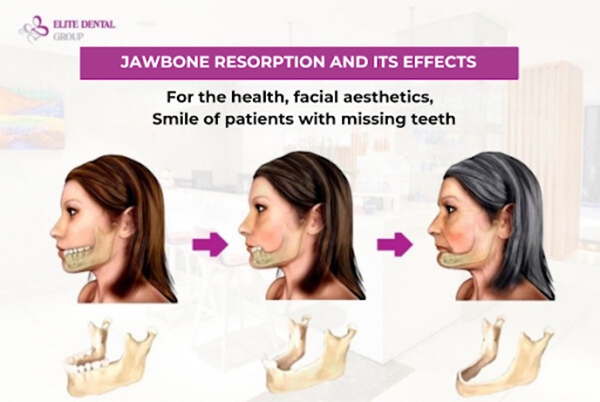
2. Symptoms of Jawbone Resorption
Here are the symptoms of jawbone resorption that you might notice:
- The maxillary sinus appears lowered in the area where teeth are missing.
- The bone in the area of tooth loss changes in size and height, with deep indentations at the site of the missing tooth.
- Facial structure changes, losing symmetry, with sunken cheeks, sagging skin, and wrinkles, making the face appear older.
- Swollen gums and bleeding from the tooth root.
- Gum recession, making the tooth appear longer, accompanied by sensitivity and discomfort.
- Loose teeth, which are no longer firm and may cause pain when chewing.
If these symptoms of tooth resorption are observed, it is essential to seek examination as soon as possible. A thorough examination will enable the dentist to accurately diagnose the cause and recommend appropriate treatment for jawbone resorption.
3. Causes of Jawbone Resorption
Jawbone resorption can stem from several causes, including:
3.1. Tooth Loss
Typically, the force exerted by chewing stimulates bone tissue activity and helps maintain bone density. Therefore, when a tooth is lost, this stimulating force is no longer present, and the jawbone gradually undergoes resorption.
Many people say that after losing a tooth or having a tooth extracted for a period of time, their face and oral condition change, the cheeks are sunken, the jawbone in the position where the tooth was lost is concave, and the adjacent teeth are misaligned. into each other. This…
3.2. Periodontal Disease
If left untreated, periodontal disease can lead to swollen gums, gum recession, and bleeding at the tooth root. Over time, the gums may no longer adhere tightly to the tooth, allowing bacteria to invade and cause infection. This infection increases the risk of jawbone resorption and can even result in tooth loss.
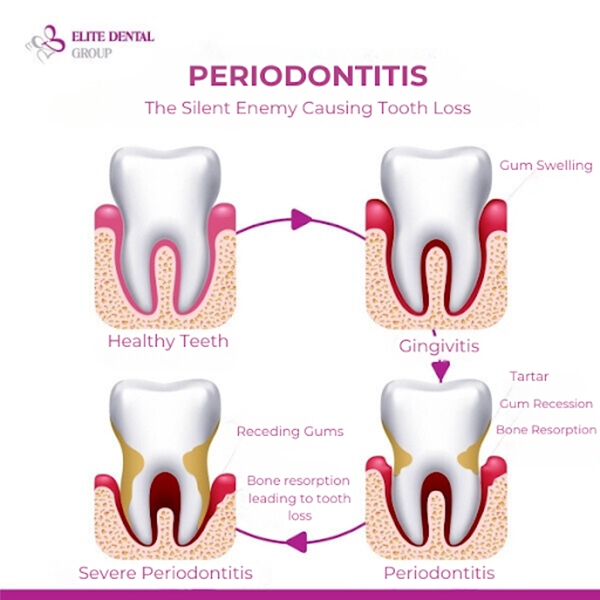
3.3. Using Removable Dentures and Dental Bridges
Many people opt for dental bridges or removable dentures to restore their teeth after tooth loss. However, these methods cannot replace the lost tooth root and only restore the crown above the gum line. This limitation contributes to the acceleration of jawbone resorption.
Dental bridges are a common restorative treatment for missing teeth, offering both aesthetic and functional benefits. However, one potential complication associated with dental bridges is alveolar bone resorption, or bone loss. When teeth are lost, the underlying bone begins to deteriorate due to lack of stimulation. While dental bridges can…
3.4. Traumatic Occlusion
Traumatic occlusion occurs when the bone tissue surrounding the teeth is subjected to excessive pressure due to misaligned bites such as crossbite, deep bite, or from excessive orthodontic force applied during teeth straightening.
4. Is Jawbone Resorption Dangerous?
Jawbone resorption can have significant negative impacts on both oral health and the aesthetics of the face. Specifically, it can cause:
4.1. Misaligned Bite
After tooth loss, the surrounding teeth tend to shift toward the empty space, leading to an imbalance in the bite. Additionally, these teeth may weaken over time, becoming loose and at risk of falling out.
4.2. Gum Recession
As bone resorption occurs, the bone is no longer able to support the gums adequately. This leads to gum recession, exposing the tooth roots and making them vulnerable to bacterial infections.
4.3. Facial Deformity
Jawbone resorption shortens the lower jaw, and over time, the cheeks may hollow out, leading to a sunken appearance, wrinkles, and sagging skin, which detracts from facial aesthetics. These signs of aging become even more pronounced in those with complete jawbone loss.
4.4. Difficulty in Restoring Teeth
Teeth may shift and overlap, and the bone at the site of the lost tooth may become deeply indented, making future tooth restoration much more challenging.
5. Can Jawbone Resorption Be Treated?
Currently, bone grafting is an effective method to treat jawbone resorption. This technique involves using either artificial or natural bone to fill in the resorbed area, strengthening the bone’s density and improving the functional and aesthetic aspects of the jawline.
Bone grafting is considered one of the most complex procedures in dental treatment. It requires a highly skilled and experienced dentist to accurately calculate the grafting location. Incorrect placement could lead to sinus perforation or other serious complications. Therefore, when opting for bone grafting to treat jawbone resorption, it is crucial to choose a reputable dental clinic with high expertise to minimize unnecessary risks.
Elite Dental is a trusted dental clinic with over 15 years of experience, staffed by a team of highly specialized and experienced dentists in bone grafting procedures.
At Elite Dental, advanced equipment such as CBCT imaging machines, which help determine jawbone density, PRP laser machines, which accelerate healing, and Piezotome machines, which reduce surgical trauma, are available. With the support of these devices, dentists can accurately assess bone width, determine the necessity of bone grafting, and ensure that the bone grafting process is quick and smooth.
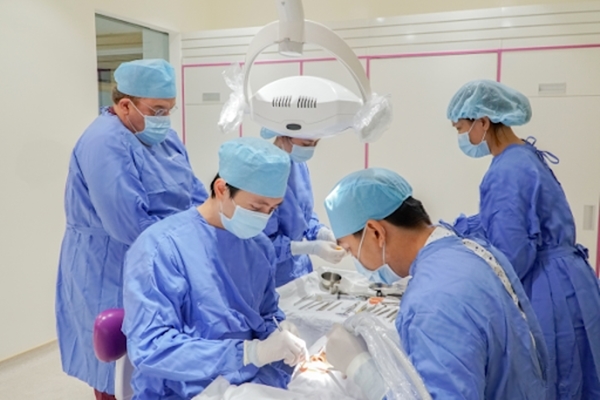
6. How to Prevent Jawbone Resorption?
According to statistics, up to 75% of jawbone resorption can occur within the first five years after tooth loss, leading to significant changes in the facial structure and jawbone. Therefore, to prevent jawbone resorption, it’s recommended to have dental implants placed immediately after tooth loss. But why is this so effective?
Dental implants are currently the most advanced solution for tooth restoration, as they can replace the lost natural tooth root with a high-quality titanium post. The titanium post is securely fixed into the jawbone, and once it has integrated with the bone, it forms a stable tooth root. Following this, the dentist will attach a crown that matches the color and shape of the natural tooth to complete the restoration.
By replacing the natural tooth root and transmitting chewing forces to the jawbone, dental implants can effectively prevent jawbone resorption. Additionally, they improve chewing function by up to 90%, ensure aesthetics, and have a high lifespan, potentially lasting a lifetime if cared for properly.
Additional information: > Are dental implants dangerous? > Does getting dental implants hurt?
In 2019, Elite Dental was honored as the first “Advanced Implant Training Center” in Vietnam, recognized by Straumann, the world’s leading Implant Corporation. Under the leadership of Dr. Tran Hung Lam, Ph.D. – Secretary General of the Ho Chi Minh City Dental Implant Association and President of ITI Vietnam (International Team of Implantology), Elite Dental has successfully treated hundreds of Implant cases, establishing professionalism and earning the trust of its customers.
Additionally, Elite Dental utilizes state-of-the-art equipment and genuine imported Implant posts from abroad, ensuring that the Implant procedure is comfortable, gentle, and safe for customers’ health.
In addition to the Implant treatment method, regular teeth cleaning and dental check-ups are also effective solutions for preventing bone loss, helping to reduce the risk of periodontitis and promptly addressing any abnormalities in oral health.
Overall, jawbone loss is a serious complication that requires early treatment. If you are experiencing similar issues, it is advisable to see a dentist for an examination and appropriate treatment advice.
Related posts: > Can bone loss be corrected using dental implants? > Causes of molar tooth loss, consequences, and solutions > What to do when you lose a front tooth, and the best treatment


